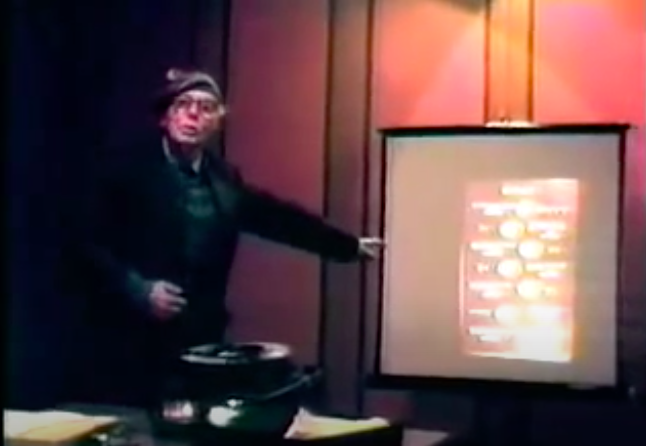- Ernest M. Robson — Shadows of the Voice Accompanying Cassette

Description
Ernest M. Robson (1902–1988) was an American poet, publisher, fur trapper, detergent chemist, minor league baseball player, mathematician, and astronomer. That list could be a lot longer. For all his proficiency in a wide range of fields, poetry was central to his life, and his oeuvre articulates a poetry not only pulled out from systematic contexts but also as something cosmological in origin. He studied under Robert Frost at Amherst College in the 1920s, gaining a foundation in traditional poetics. However, notable are his crossovers with the fields of astronomy, physics, and mathematics. His bibliography includes titles such as, Poetic Potentials in the Information of Astronomy (Urania,1970), Against Infinity: An Anthology of Contemporary Mathematical Poetry (Primary Press,1979), and Freedom, Cannibalism, Creative Love & the Values of Cosmic Nonsense: A Philosophical Manifesto (Primary Press, 1986). He often read his work in planetariums, and he and his wife Marion would give presentations using "intonemic" sound and traditional poetry as an exploration into the cosmos.
Shadows of the Voice was published by Primary Press in 1982, and included a cassette featuring Robson and Marion reading the text over electronic music by the composer Larry Wendt. It is divided into two compositions: "Voices in the River" and "Requiem for Lost Sperm." Much of Robson's work is sound-based, and his text-based work often includes a handwritten notation system of his own invention. He believed that "the acoustic energy levels of blocks of syllables and words" could be manipulated to project various feelings and conditions. However, there is also a good deal of technological and mechanical experimentation in his sound poems. In the introduction to Robson's novel Thomas Onetwo (Something Else Press, 1971), the "publisher" (likely Dick Higgins or Ken Friedman) writes:
Robson is a scientist poet. The works cannot be divorced from their research element without causing real damage to them. Robson researches not structure but the form of his own subjects. [...] He is in the best sense a rhetorician, concerned less with how to say something effectively than with the whole dynamic of saying it at all.
We would also like to add to this observation the importance of collectivity. Robson is seldom alone in his work, with Marion almost always by his side. Later in his life, he worked closely with an ensemble of sound poets called the Philadelphia Language Action Group (featuring Marion and the poet Sol Leon, among others), frequently performing in and around Eastern Pennsylvania.
In addition, we recommend checking out Lewis Freedman’s lovely scan of Robson’s TRANSWHICHICS (Dufour Editions, 1969), which, as Freedman writes, "details and performs Robson's experiments with a phonetic-linguistic approach to prosody to produce poems which have built into their physical type a notation of their own vowel pitch modulation and prosodic duration and intensity."
Special thanks to Glenn R. Frantz and Joe Schmidt.